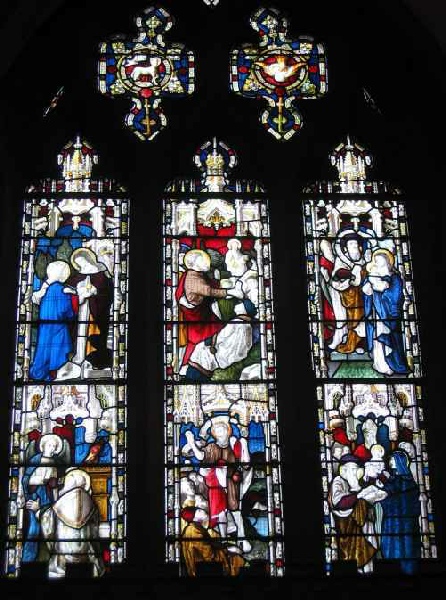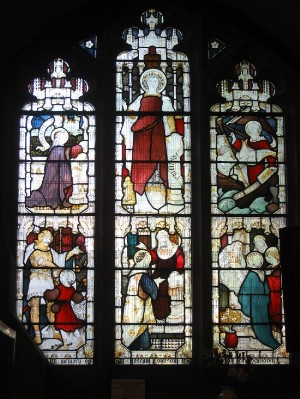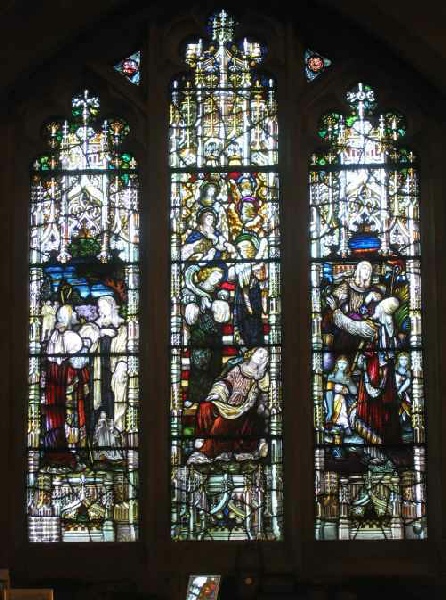A Guide to the stained glass windows in St Wilfrid's Church
–
The impact of visual imagery on us is and always has been very great. Pictures, especially coloured ones, remain with us long after we have seen them and perhaps this is one reason why builders of churches make so much use of stained glass. Undoubtedly, in former times stained glass windows were used as aids to teaching Christianity. Many worshippers would be unable to read the Bible for themselves, relying on what they heard from others. Having the spoken word illustrated in colour in a window which one could look at must have been of great assistance in remembering and understanding what was said.
The need for permanent visual aids has declined over the years and yet the installation of stained glass windows in churches continues. Such installations are one way of making a church building beautiful to look at and this, in itself offers praise to Almighty God, to whom all things belong.
The clerestory windows and two of the windows at ground level in St. Wilfrid’s church are of latticed amber glass while the slit windows in the turrets and the west tower are of plain glass. It may be that, when the nave, chancel and sanctuary of the present structure were replaced in 1876, only the East window of the sanctuary was to be of stained glass, the rest being designed to be of latticed amber glass. However, since that date most of these have been set in stained glass as a mark of thanks to God and as memorials to loved ones. With the exception of the East window of the sanctuary, therefore, all the stained glass in St. Wilfrid’s church is Victorian dating from 1876 or later.
With two exceptions, the windows are illustrative of persons or events. The exceptions are the west window of the tower and the westerly of the two windows in the north chapel. Each of these is a memorial to the individual person named in the ascription set in the window itself or in the cill below the window. Many of the windows express gratitude for the life of a relative –
The remaining windows all have Biblical connotations and this in itself raises the question of choice. How does one choose a subject for a stained glass window from such a rich sourcebook as the Bible? What are the really important topics to be selected? Who are the really important persons and which are the important events in their lives? How much can be illustrated in the lights of one window anyway?
In St. Wilfrid’s church, the stained glass windows portray events in the life of Jesus Christ, but strangely enough not his nativity; the life of St. John the Baptist; the lives of men of the Old Testament such as Noah, Abraham and Jacob; portraits of Biblical saints such as St. Mary Magdalen, St. Anna, St. Mary the Virgin, and St. Elizabeth; and illustrations of Christian virtues such as faith, hope, love, courage and patience. Only one illustrates a parable while one depicts Christianity in action through acts of compassion. The Biblical connection is perhaps at its most tenuous here since the co-
















